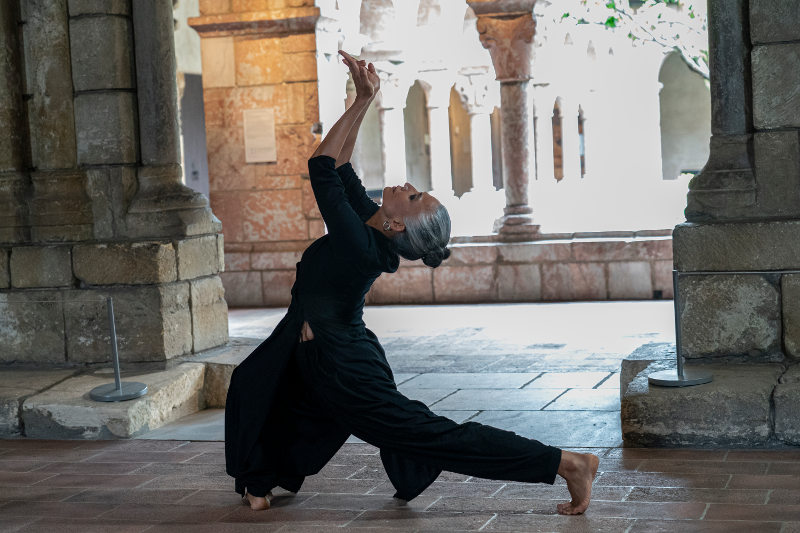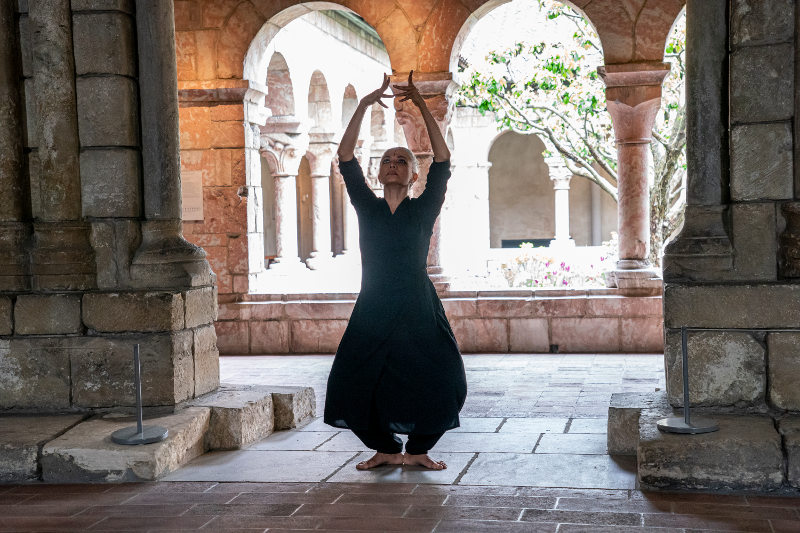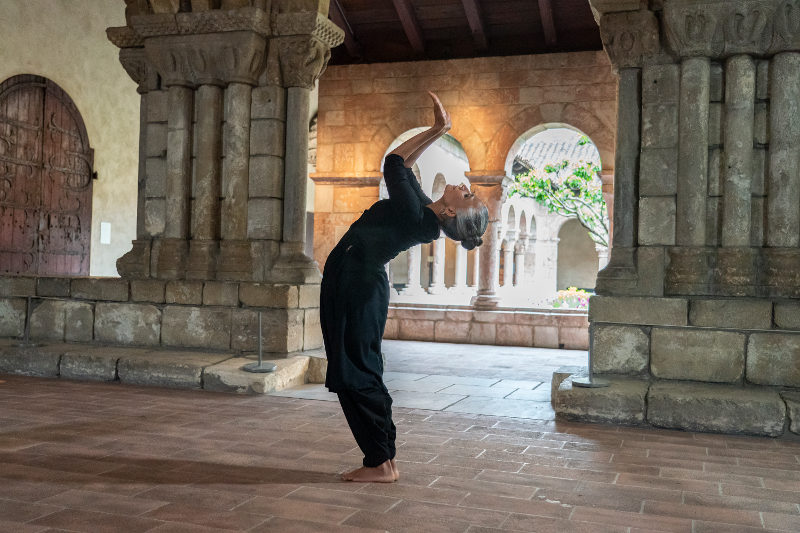
When Odissi dancer Bijayini Satpathy was selected as the MetLiveArts Artist in Residence for 2021-22, she contemplated how to use the much-coveted opportunity─a year-long association with the Metropolitan Museum of Art and its superlative architecture and collections. Satpathy was still in the nascent stages of exploring her own choreographic voice when she was awarded this groundbreaking residency, launched in 2012 by Limor Tomer, The Met’s General Manager of the Department of Live Arts.
The invitation came amid the Covid-19 pandemic just two years after Satpathy had left a 25-year career as principal dancer of the Nrityagram Dance Ensemble in Bangalore, India. She had decided it was time to explore her own creative inclinations.
The Met residency would involve multiple stints in New York City. A year ago, Satpathy spent two weeks touring Covid-empty galleries under the expert guidance of each department’s curators. Satpathy shared, “Limor told me, ‘The sky is the limit. But you must come meet with the curators, intersect with the galleries, and include a performance.’” Several of the Met’s spaces resonated deeply for her and she received approval to generate “pop up” solo performances in four galleries.
Odissi is one of the eight classical dance forms of India, rooted in the cultural habitat of the eastern Indian state of Odisha. With origins in and influences from Hindu temple worship and sculpture, the form is grounded in a specific movement vocabulary, regional subject matter (poetry and legend), and style of music.


As Satpathy began choreographing in the four galleries─The Cloisters, the Islamic Wing, the Modern and Contemporary Gallery, and the Astor Chinese Garden Court─she challenged herself to respond to the distinct architectural settings and artwork and move beyond Odissi’s body language, legends, and aesthetics.
In discussing the creative process, Satpathy disclosed, “I knew I needed to create music specific to the culture of each space.” She found a collaborative soulmate in national award-winning Indian composer and vocalist Bindhumalini Narayanaswamy, who moved the soundscape away from the traditional fare. “I asked The Met to send Bindhu [the composer] 20-minute video tours of each of the galleries,” continued Satpathy. Narayanaswamy responded to the mood and aesthetic of each gallery creating unconventional acoustic compositions integrating sounds of nature, non-Indian musical instruments, and melodic chants and textures of daily life from all over the globe.

Over the course of the year, Satpathy returned to The Met for open rehearsals to work on the choreographies─ stimulating a myriad of reactions and conversations with museum visitors. In the contemporary gallery, several people commented that they thought her movements looked like modern dance. A university student who observed her rehearsing in the Astor Court Chinese Garden asked, “Why do you keep changing your movements every time you dance the piece?” She was still exploring, she explained, and the choreography was not yet fixed. Learning there would be a final performance at the end of the residency and that the choreography would be set by then, he opined that she should keep it unfixed as the repetition with changes to the movement added surprise and ongoing interest. “In that same gallery,” Satpathy described, “a little 6-year-old stood across from me in the courtyard mirroring my movements. She danced with me for an hour. Her dad couldn’t take her away. She was just dancing and dancing and dancing.”
On May 4, to kick off the pop-up series, Satpathy performed The Prayer for an intimate, invited audience at The Met Cloisters in the stone and brick vaulted Chapter House. The medieval monastery architecture inspired her to explore the human body in prayer. Satpathy clarified, “In the title, I’m not referring to a religious song but rather, the one who prays.” In this composition, she challenged herself not to default to the rhythmic footwork so second-nature to an Indian dancer. In fact, there was no rhythmic percussion in the music either. Satpathy refused to rely on the specific gesture vocabulary that is a defining feature of classical Indian dance─instead, mining her innermost resources to locate her own gestures and postures of centered, integrated awareness. She wore a spare black tunic over black pants, hair tied up in a bun─no colorful sari, sparkling jewelry, or flowery headpiece. She achieved the essence of a body poised in prayer.
Satpathy walked pensively along the arcade that circumscribes the inner courtyard to offer her danced prayer. Entering through the archway into the Chapter House, she moved into postures, gestures, and floor patterns that activated the space with a sense of sacred purpose. The sound collage with echoing water drops spilling into a pool and a stream of prayers, calls, and chants from Hindu, Islamic, Buddhist, Gregorian, and Native American traditions fused with Satpathy’s intention to inhabit a sense of communion. With her back to the viewers, Satpathy made a final descent to touch the earth in a gesture of humility and gratitude. Then she rose in a state of open readiness and walked out toward the beckoning sunlight as the score faded. All that remained was the sound of tweeting birds.
Satpathy’s public performances in The Metropolitan Museum of Art galleries (free with museum ticket) are as follows:
- Taru, meaning “tree” in Sanskrit, is inspired by the non-figurative, geometrical patterns carved into the wooden ceiling in one of the Islamic art galleries.
Islamic Art Galleries (459, 460) | Sat May 14, 2 & 3 pm
- Antaranga, meaning “inner” or “intimate,” is performed before Sam Gilliam’s massive drape painting called Carousel State in the Modern and Contemporary Wing. Satpathy interprets Greek poet Sappho’s “Fragment 31” describing a state of inner turmoil from turbulent pangs of love.
Modern and Contemporary Art Gallery (924) | Sun May 15, 2 & 3 pm
- Naino, a narrative dance interpreting a poem by 15th century Indian mystic Kabir comes to life along the terraced walkway overlooking the Chinese Scholars’ Garden.
Astor Chinese Garden Court (217) | Sat May 21, 2 & 3 pm
The residency will conclude with final performances on September 12 and 13.
Karen Greenspan is a New York City-based dance journalist and the author of Footfalls from the Land of Happiness: A Journey into the Dances of Bhutan.
